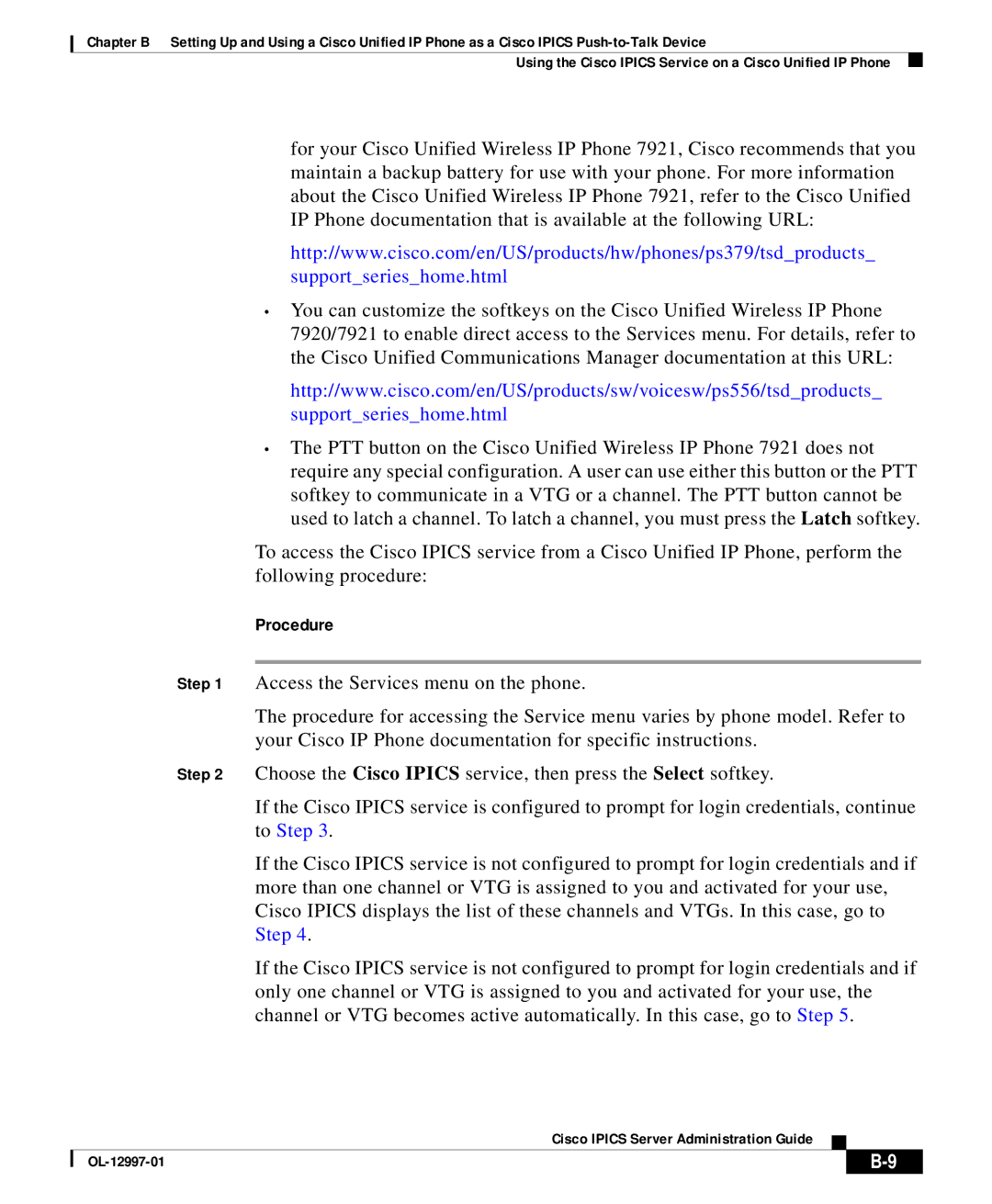OL-12997-01 specifications
Cisco Systems OL-12997-01 is a comprehensive training guide and documentation resource designed to enhance the understanding and operational capacity of users working with Cisco's technologies. This resource primarily focuses on networking fundamentals, specifically aligned with Cisco's certification programs such as CCNA.One of the main features of OL-12997-01 is its emphasis on foundational networking concepts. It covers the layers of the OSI model, which is crucial for understanding how data is transmitted across networks. The guide delves into various networking protocols, emphasizing TCP/IP and its role in enabling communication between heterogeneous systems.
Moreover, OL-12997-01 introduces users to Cisco's routing and switching technologies, which are integral to any network's performance. Readers will gain insights into static and dynamic routing protocols, including RIP, EIGRP, and OSPF, with a strong focus on how to configure and troubleshoot these protocols in real-world scenarios.
Another notable characteristic of OL-12997-01 is its hands-on approach to learning. The guide incorporates practical exercises and labs that encourage users to apply theoretical knowledge to practical situations. This experiential learning helps reinforce the complexities of network management, security, and optimization.
In addition to routing and switching, the guide also covers an array of other key areas such as network security protocols, wireless networking, and the integration of cloud computing services within a network framework. Users will learn about firewall configurations, intrusion detection systems, and best practices for securing network devices.
Furthermore, OL-12997-01 introduces emerging technologies like Internet of Things (IoT) and network automation, reflecting Cisco's commitment to staying ahead in the rapidly evolving tech landscape. This inclusion is vital for professionals aiming to advance their careers in an industry where technology is constantly changing.
In summary, Cisco Systems OL-12997-01 provides a robust foundation for understanding networking principles and Cisco technologies. Its blend of theoretical concepts, practical applications, and coverage of cutting-edge technologies makes it an essential resource for anyone looking to excel in the field of networking and prepare for Cisco's certifications. Whether for new learners or seasoned professionals, this guide serves as a stepping stone towards mastering Cisco's vast ecosystem of solutions.

